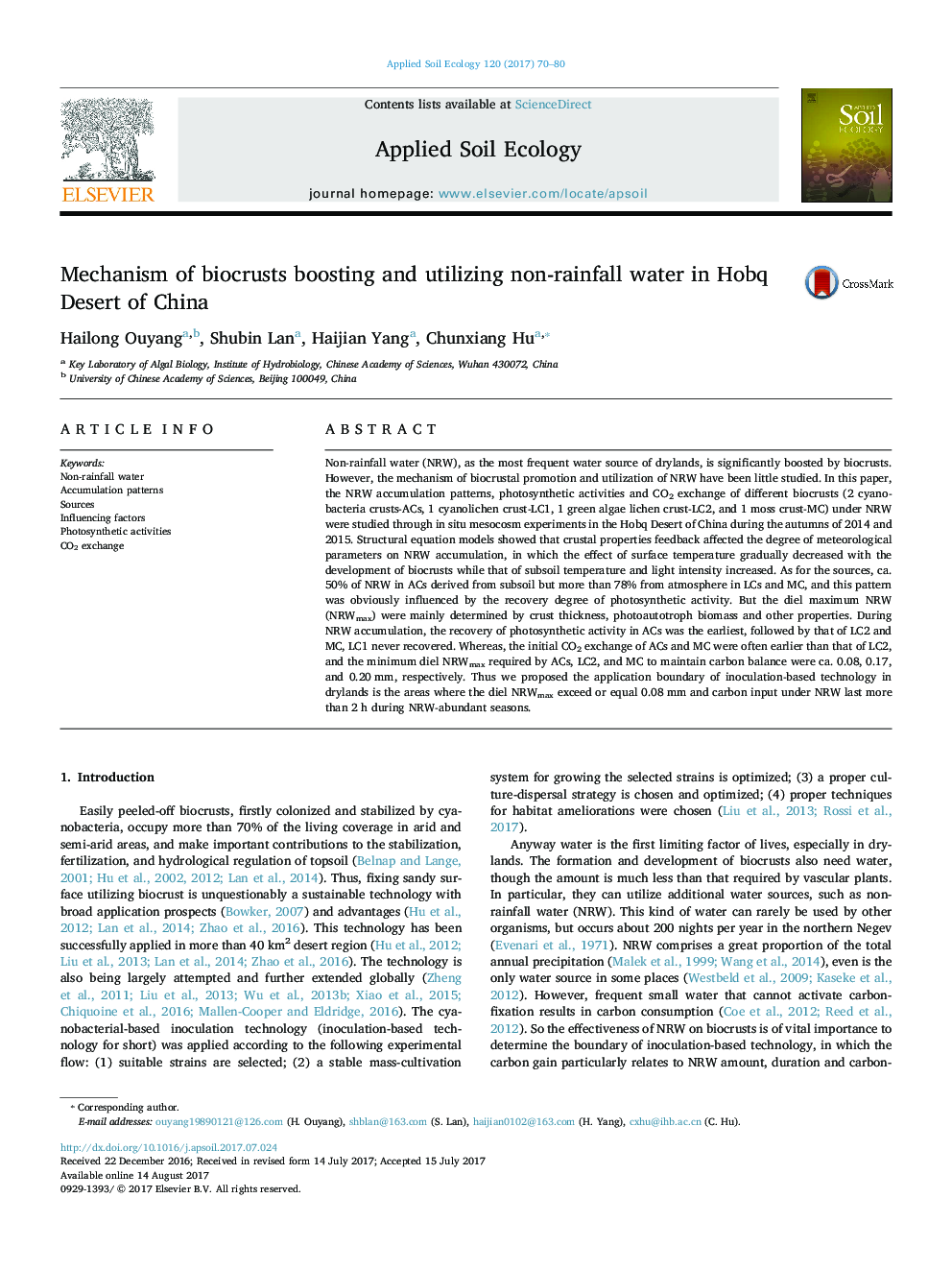| Article ID | Journal | Published Year | Pages | File Type |
|---|---|---|---|---|
| 5742573 | Applied Soil Ecology | 2017 | 11 Pages |
Non-rainfall water (NRW), as the most frequent water source of drylands, is significantly boosted by biocrusts. However, the mechanism of biocrustal promotion and utilization of NRW have been little studied. In this paper, the NRW accumulation patterns, photosynthetic activities and CO2 exchange of different biocrusts (2 cyanobacteria crusts-ACs, 1 cyanolichen crust-LC1, 1 green algae lichen crust-LC2, and 1 moss crust-MC) under NRW were studied through in situ mesocosm experiments in the Hobq Desert of China during the autumns of 2014 and 2015. Structural equation models showed that crustal properties feedback affected the degree of meteorological parameters on NRW accumulation, in which the effect of surface temperature gradually decreased with the development of biocrusts while that of subsoil temperature and light intensity increased. As for the sources, ca. 50% of NRW in ACs derived from subsoil but more than 78% from atmosphere in LCs and MC, and this pattern was obviously influenced by the recovery degree of photosynthetic activity. But the diel maximum NRW (NRWmax) were mainly determined by crust thickness, photoautotroph biomass and other properties. During NRW accumulation, the recovery of photosynthetic activity in ACs was the earliest, followed by that of LC2 and MC, LC1 never recovered. Whereas, the initial CO2 exchange of ACs and MC were often earlier than that of LC2, and the minimum diel NRWmax required by ACs, LC2, and MC to maintain carbon balance were ca. 0.08, 0.17, and 0.20Â mm, respectively. Thus we proposed the application boundary of inoculation-based technology in drylands is the areas where the diel NRWmax exceed or equal 0.08Â mm and carbon input under NRW last more than 2Â h during NRW-abundant seasons.
